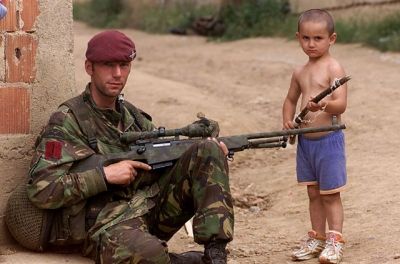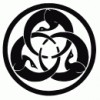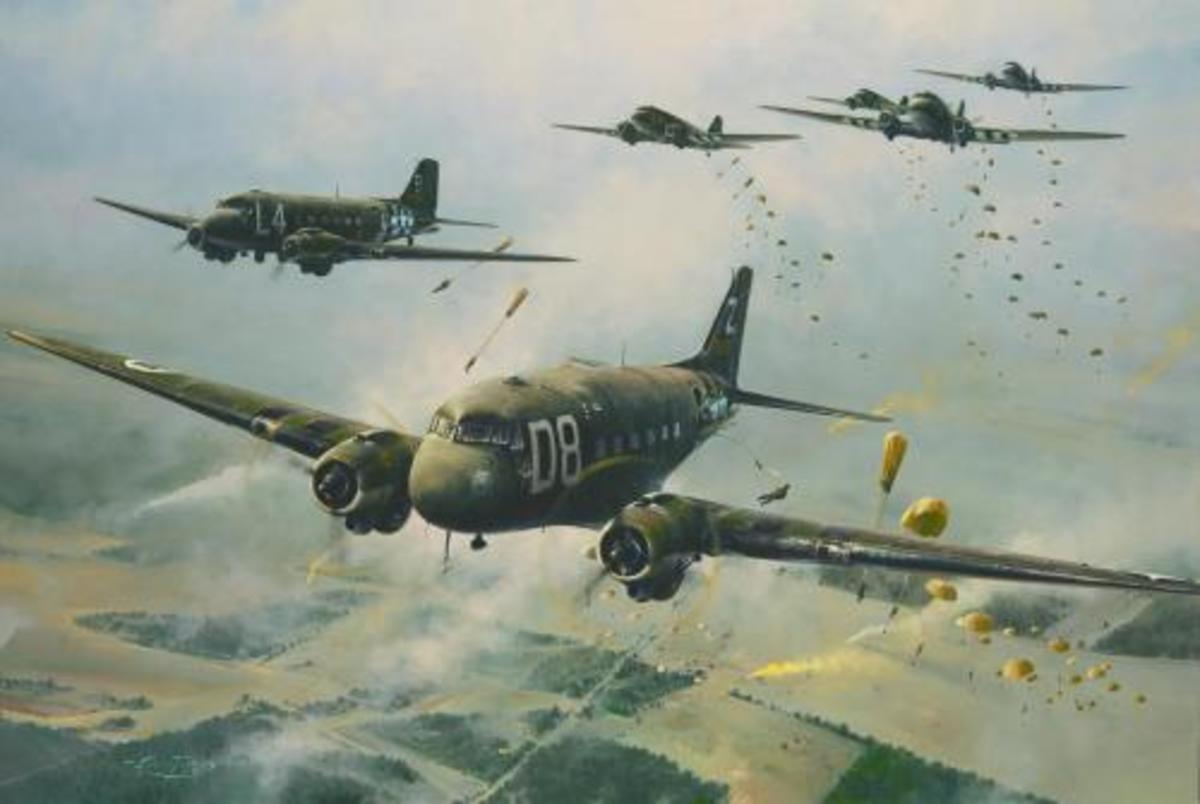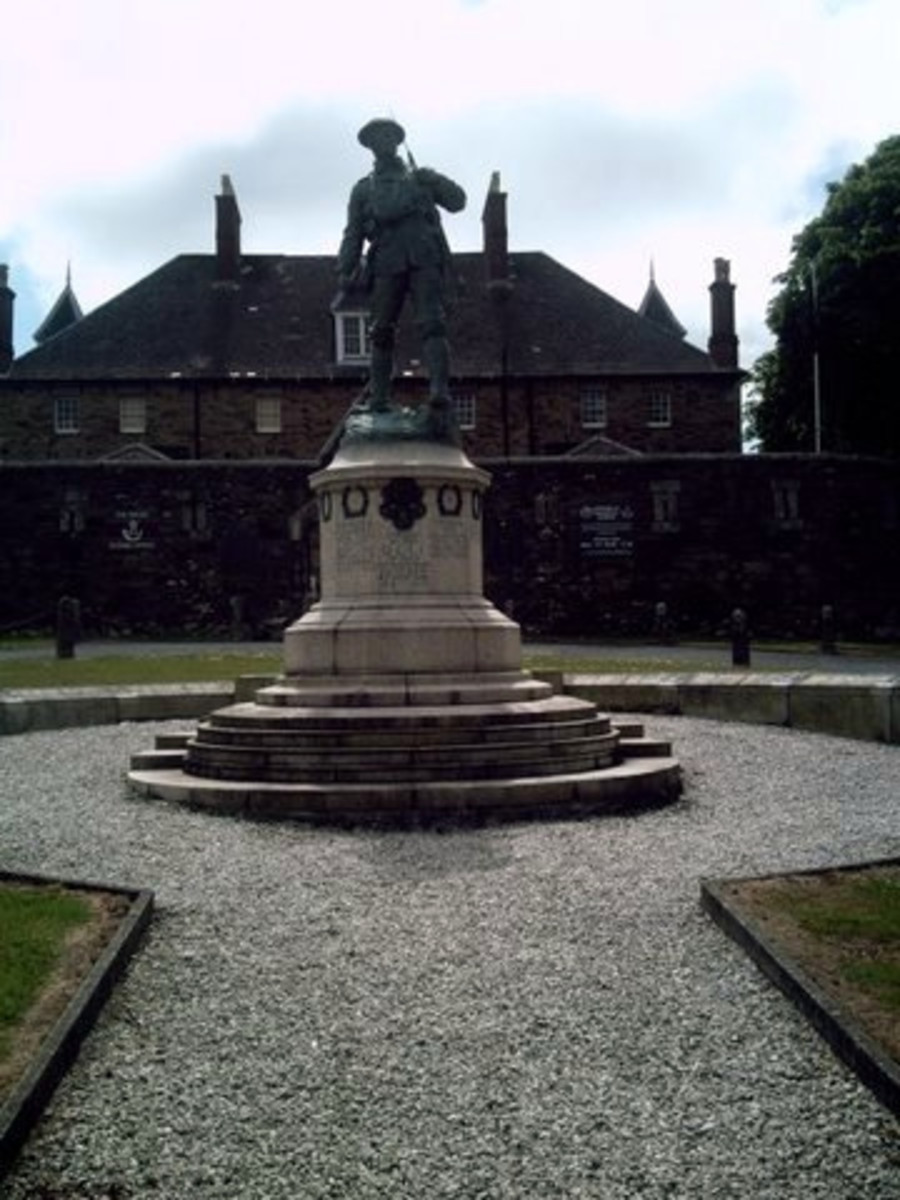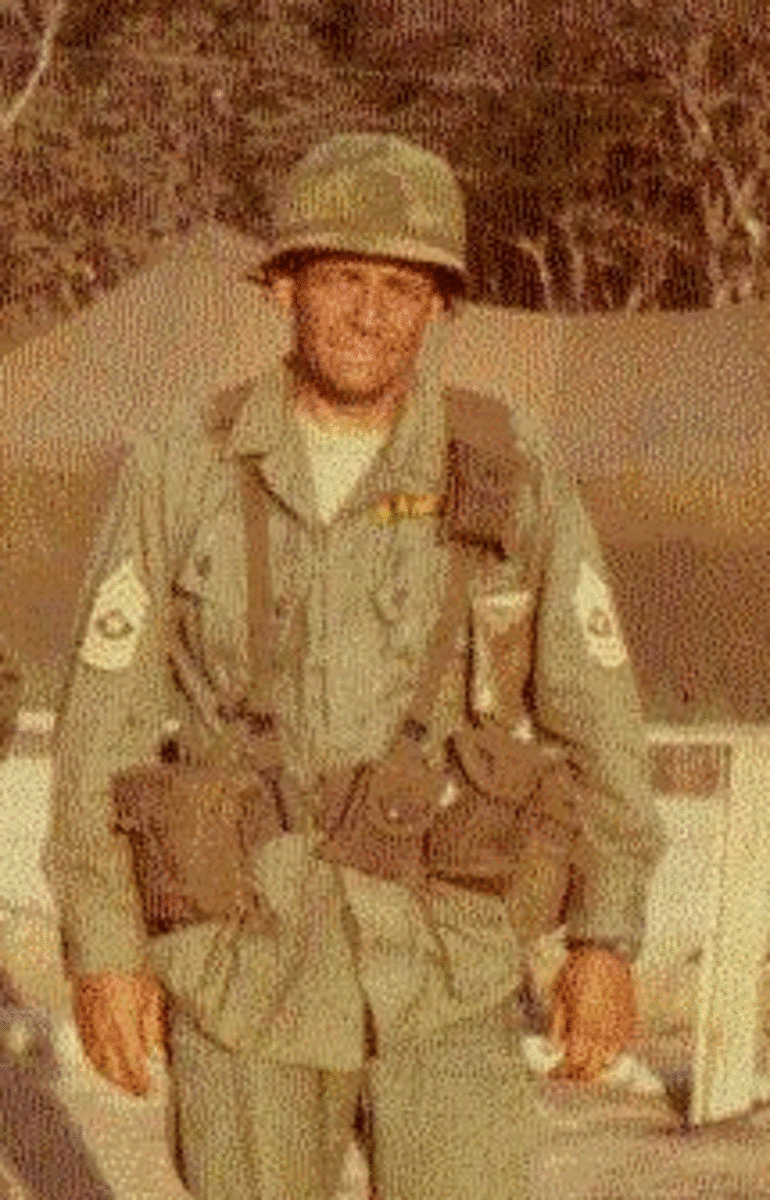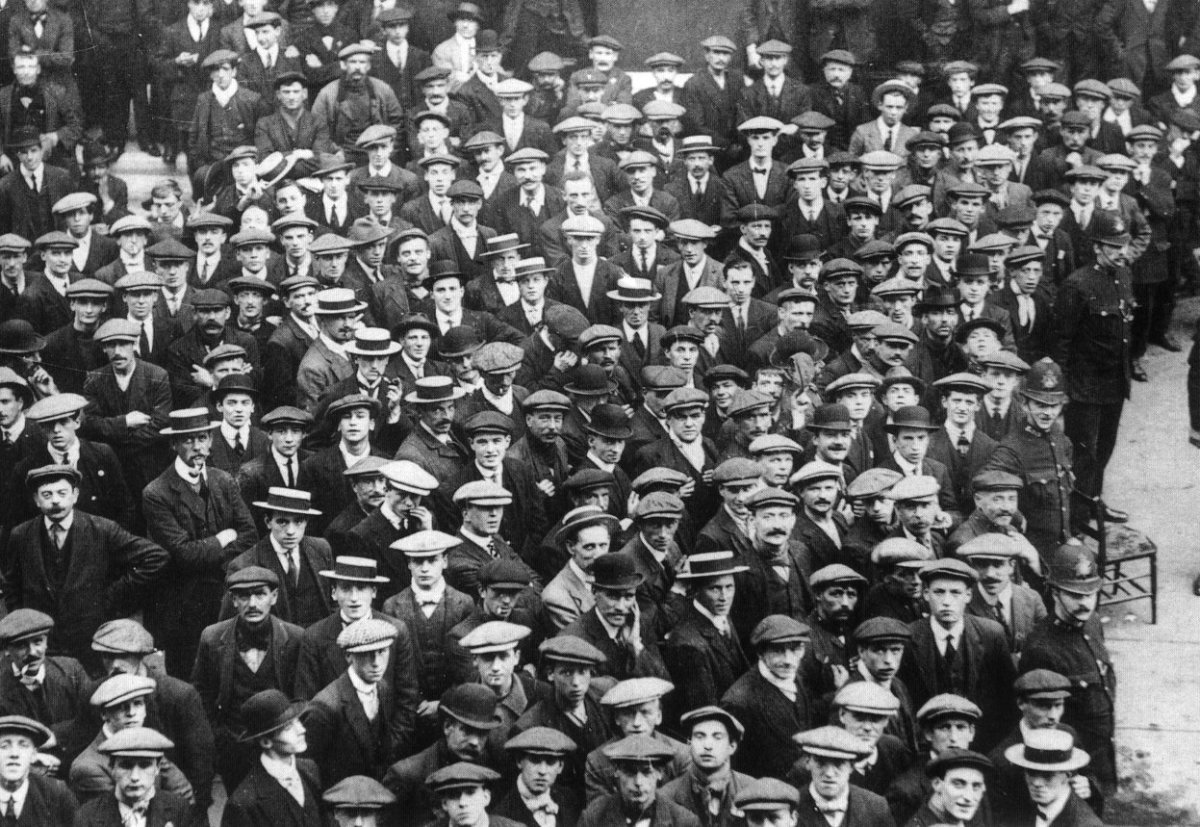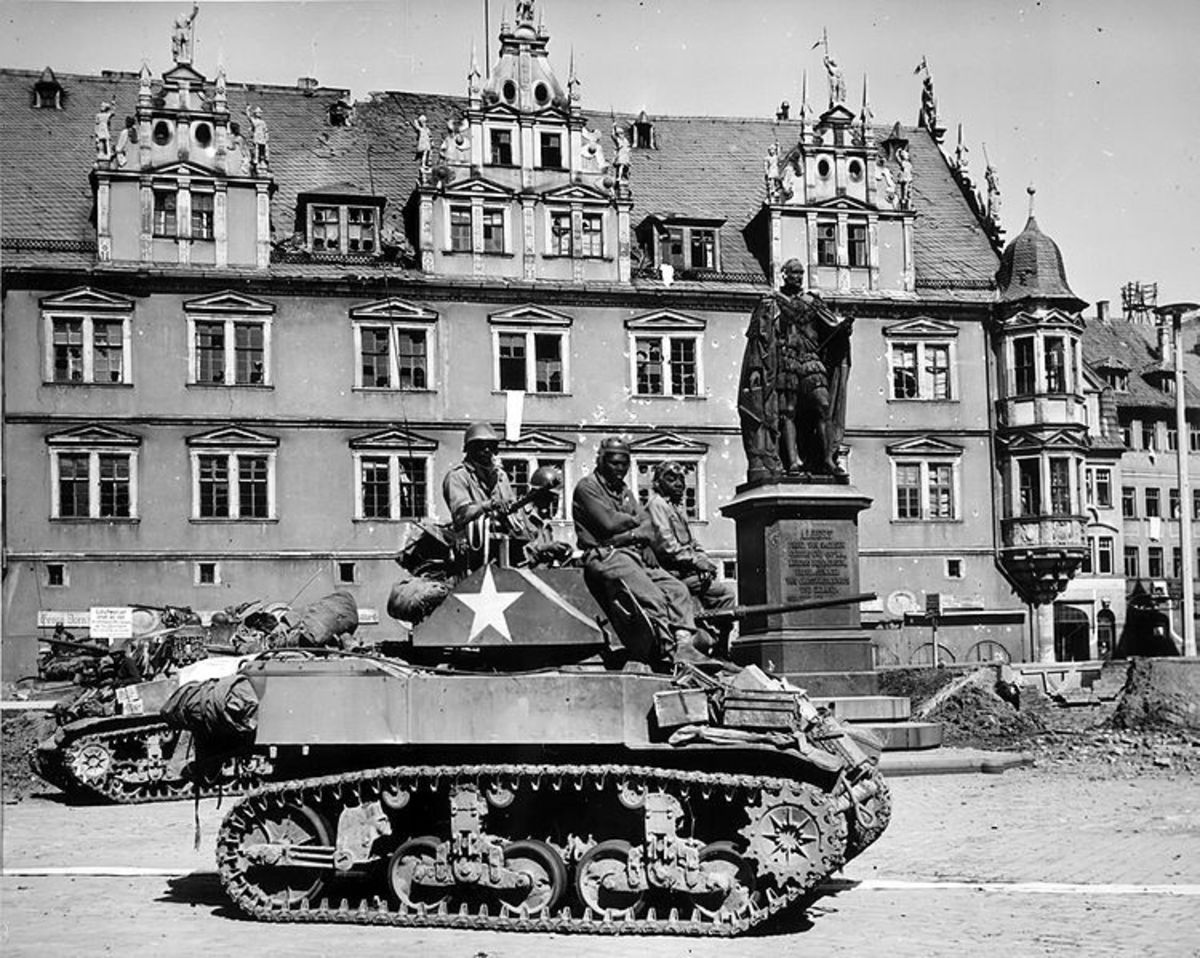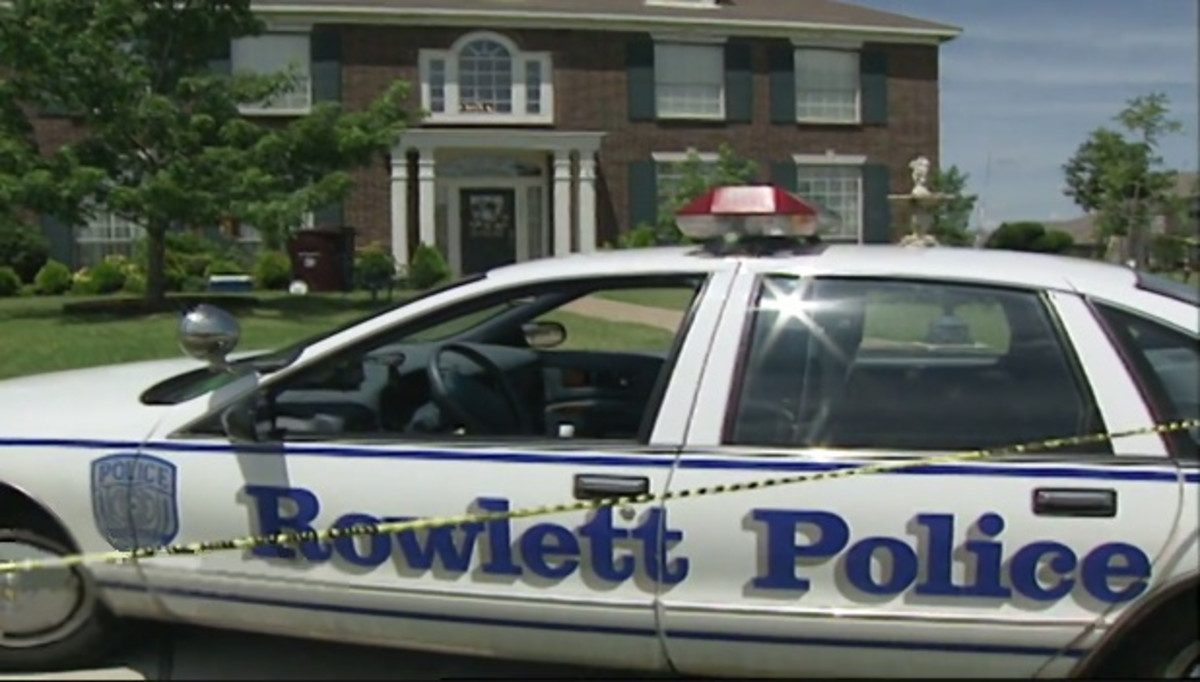The Parachute Regiment

Background...
The Parachute Regiment is the Airborne Infantry element of the British Army. It is considered an elite unit by virtue of its stringent selection process, rigorous training programme and by the requirement of its role to operate with minimal or no support behind enemy lines and against numerically superior forces. It forms the airborne infantry element of 16 Air Assault Brigade!!..
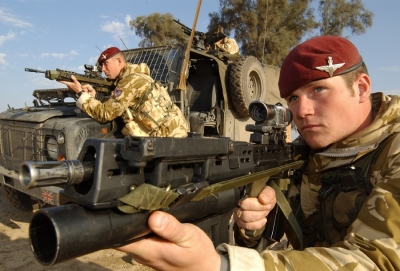
Formation..
The Parachute Regiment has its origins in the elite force set up by the British Army at the request of Winston Churchill. Britain was inspired in the creation of airborne forces (including the Parachute Regiment, Air Landing Regiments, and the Glider Pilot Regiment) by the example of the German Luftwaffe's Fallschirmjäger, which had a major role in the invasions of Norway, and the Low Countries, and a pivotal, if Pyrrhic, one in the invasion of Crete.
Britain's first airborne assault took place on February 10, 1941, when, what was then known as II Special Air Service (some 40 men of 500 trained in, introduced themselves to the enemy by jumping into Italy and blowing up an aqueduct in a daring raid named Operation Colossus.
After the Battle of Crete, it was agreed that Britain would need far more paratroopers for similar operations. No 2 Commando were tasked with specialising in airborne assault and became the nucleus of the Parachute Regiment..
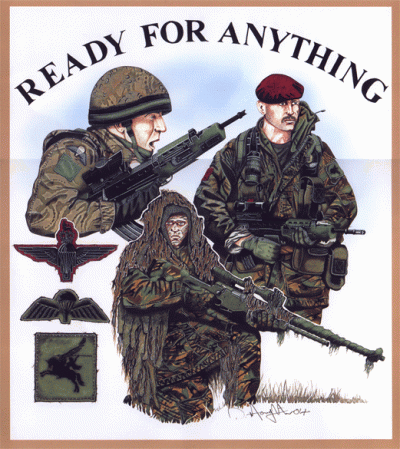
The regiment is formed of three regular and one reserve battalions to 16 Brigade HQ element. One battalion, 1 PARA, is permanently attached to Director Special Forces in the Special Forces Support Group!!
Argentine POW's Guarded by 2 Para..
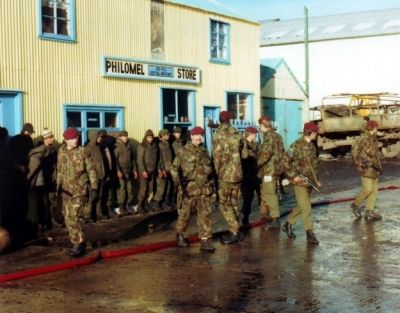
Did You Know?..
58% of the Elite Special Air Service come directly from P Company!!
History of Operations..
Operation Biting
A Würzburg radar on the coast of France was attacked by British Paratroopers in Operation Biting on February 27, 1942. The electronics of the system were brought back to Britain for examination so that counter measures could be devised.
Operation Husky-Sicily
As part of the Operation Husky four airborne operations were carried out, landing during the night of the 9/July 10, 1943; two were British and two American. The strong winds blew the dropping aircraft off course and scattered them widely. British glider-landed troops fared badly; only 12 out of 144 gliders landing on target, many landing in the sea. Nevertheless the scattered airborne troops maximised their opportunities, attacking patrols and creating confusion wherever possible.
It was during operations in North Africa that the maroon beret was first seen by German troops. Within months they had christened them Rote Teufel - Red Devils. However, this nickname was not a reference to the colour of their headgear but in fact due to the red mud that the soldiers were covered in after heavy rain.
Operation Slapstick - Southern Italy
During the Allied invasion of Italy the British 1st Airborne Division landed by sea near the port of Taranto in the 'heel' of Italy (Operation Slapstick). Their task was to capture the port and several nearby airfields and link with the British Eighth Army before pressing north to join the US Fifth Army near Foggia.
Operation Overlord - Normandy
There were many separate airborne operations during Operation Overlord on D-Day (June 6, 1944) but broadly the task of the airborne forces was to secure the flanks of the landing beaches in Normandy. The British secured the Eastern flank in Operation Tonga. There were other operations designed to take the specific hardened targets notably the guns of the Merville gun battery. Buried under 12ft-thick concrete, the four 105 mm guns, just miles from the beaches of Sword, Juno and Gold, had the capability to engage warships out at sea and sink landing craft heading for the beaches. The task of putting them out of action fell to the 9th Bn Parachute Regiment which they succeeded in doing for 36 hours by killing all but a handful of the gunners.
Operation Dragoon - Southern France
On August 15, 1944, parachute units of the 2nd Independent Parachute Brigade, which included the 4th, 5th and 6th Para battalions and lst Independent Pathfinder Platoon, dropped into Southern France between Frejus and Cannes as part of Operation Dragoon. Their objective was to capture the area, destroy all enemy positions and hold the ground until the US Seventh Army came ashore. Once they had captured their initial targets, they were reinforced by three thousand soldiers and critical equipment carried in over three hundred gliders in an operation code named Dove. The drop was almost unopposed and within days the British parachute group was withdrawn by sea to Italy in readiness for future operations.
Operation Market-Garden - Netherlands
Perhaps the most famous airborne operation of history is Operation Market Garden of September 1944, in which 35,000 troops of the First Allied Airborne Army were dropped 100 miles behind the German front lines in an attempt to create a path across the Netherlands including the bridge over the Rhine at Arnhem. Three complete airborne divisions, the British 1st Airborne Division, and the US 82nd and 101st Airborne Divisions, and the Polish 1st Independent Parachute Brigade from the Army were used. The units were dropped at various points along Highway 69 in order to create a "carpet" over which the British XXX Corps could rapidly advance. German opposition was some three times that expected, including two under-strength but very experienced panzer divisions. Although the operation had partial success in the end the British 1st Airborne division was all but destroyed and the bridge at Arnhem remained in German hands.
An interesting story arises from this episode - upon finally surrendering in the ruins of Arnhem, with no ammunition and virtually starved, a German officer reputedly said to a British officer.. 'I fought at Stalingrad on the eastern front but I have never seen troops as good as you at city fighting - where did you learn this?', to which the officer replied 'well it was our first time - but we'll try to do better next time!'
Operation Varsity - Rhineland, Germany
The Rhine Crossing (Operation Varsity) was the biggest and most successful airborne operation in history and it marked the beginning of the end for Germany. In total, six parachute battalions, including the Canadians, of the British 6th Airborne Division, supported by glider troops from the Air Landing Brigade, dropped on March 24, 1945, as a complete force, avoiding the mistakes of Arnhem.
Together with the US 17th Airborne Division, the aim of the operation was to secure and deepen the bridgehead cast of the Rhine and then advance across country to the Baltic coast, a journey of 350 miles. Their initial objectives were the high ground overlooking the crossing, point at Diersfordter Wald and the road and rail bridges over the River Issel at Hamminkeln.
1944-1966
After the Second World War regular airborne forces were reduced to the 16th Independent Parachute Brigade Group while in the Territorial Army there was the 16th Airborne Division (TA), which was reduced to the 44th Independent Parachute Brigade Group (TA) in 1956. In 1954, at the request of the Director of Operations in Malaya, an Independent Parachute Squadron was raised from volunteers from the Parachute Regiment to assist 22 SAS by providing a fourth sabre squadron for operations in Malaya against the Communist terrorists. Some 80 officers and men were selected to form The Independent Parachute Squadron and served in Malaya on operations with 22 SAS until disbanded in May 1957 on return to the UK.
In the Suez Crisis, Operation Musketeer needed the element of total surprise to succeed, and all 660 men had to be on the ground at El Gamil airfield and ready for action within four and a half minutes. At 04.15 hours on November 5, 1956, 3 Para jumped in and although opposition was heavy, casualties were few.
In 1964, 2 Para had been sent to Singapore for jungle warfare training, after Indonesia threatened to invade the Malaysian state of Borneo. The remainder of the unit followed in March 1965, and moved direct to the Indonesian border. A month later one of the biggest battles of the war took place, when an Indonesian battalion attacked B Company of 2 Para. More than 50 Indonesians were killed, and the Paras lost two men with seven injured. This short, but intense Far East deployment, ended in July, the Battalion having been awarded eight decorations including two Military Medals
Major-General Glyn Gilbert was instrumental, throughout this period, in ensuring the Regiments survival, and in advancing the doctrine of airborne warfare. He also created the Red Devils parachute display team, and instituted the Platoon Sergeants' Battle Course at Brecon Beacons, which was later extended to the entire British Army.
Operation Banner and the Falklands
Throughout "The Troubles" in Northern Ireland, the regiment's battalions undertook many tours of duty. In 1972, while assisting the Royal Ulster Constabulary in preventing a civil rights march from taking place in Derry, twenty-eight civilians were shot, fourteen fatally. This event became known as Bloody Sunday. Allegations of IRA gunfire towards the Paras are strongly disputed; none of the dead or injured were found to have firearms. It was claimed that the British Army put nail bombs into the pockets of a boy after he died. During their tours of duty between 1971 and 1991, the Parachute Regiment lost forty men killed in The Troubles. The first of these, Sergeant Michael Willetts, was awarded the George Cross for saving a dozen lives at the cost of his own during a bombing.
On 27 August 1979 sixteen members of the Parachute Regiment and two members of the Queen's Own Highlanders were killed at Warrenpoint in Northern Ireland by two roadside bombs planted by the Provisional IRA.
After the Falklands War began in April 1982, 2 and 3 PARA were used to bring 3 Commando Brigade up to war-strength. The regiment played a prominent part in the conflict, two of its soldiers being awarded the Victoria Cross. The two recipients were Lieutenant-Colonel H. Jones and Sergeant Ian McKay.
During this time the Parachute Regiment was part of the 5th Airborne Brigade.
On 30 September 1990 Private Lee Clegg of the Parachute Regiment opened fire on a vehicle that was driving away from him after it had passed through his checkpoint. His bullets caused the death of 18 year old Karen Reilly. After being convicted of her murder and of attempting to murder the driver of the vehicle, 17 year old Martin Peake, his convictions were quashed and Clegg resumed his military career.
Due to defence cuts after the end of the Cold War (Options for Change), the 15th (Scottish Volunteer) Battalion was reduced to a company in 1993 becoming 4th Battalion.
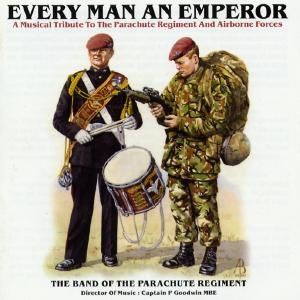
1996-2002
The 1st Battalion, augmented by C Company of 3 PARA, took part in the Kosovo War in 1999 (Operation Joint Guardian) and tasks given to the Battle group during the conflict included the heliborne assault to secure the Kacanik pass and its strategic assets. This was the only road between the Macedonian border and Pristina and its use was key to the following armoured units.
In 1999 the 10th (Volunteer) Battalion was reduced to a Company leaving only a single Reserve battalion of the Parachute Regiment. This Battalion, 4 PARA, had its Battalion HQ in Leeds with sub-units located throughout the UK: 10 (London) Company in White City and Croydon; 12 (Yorkshire) Company in Leeds and Hebburn and 15 (Scottish) Company of Glasgow and Edinburgh.
After the civil war in Sierra Leone deteriorated further, 1 PARA landed at the country's capital, Freetown, on 7 May 2000 to evacuate foreign nationals. The battalion was the lead element of a large naval task group, centred around HMS Ocean, that was heading for Sierra Leone as part of Operation Palliser. After the evacuation was completed, 1 PARA was tasked with retaining control of Freetown airport to ensure that UN supplies could be brought into the country, while also patrolling in the capital city. The rebel leader, Foday Sankoh, had been captured by government forces on 17 May. Operation Palliser ended on 15 June.
After 11 soldiers of the 1st Royal Irish Regiment (RIR) and a Sierra Leone soldier were taken hostage by a rebel faction known as the West Side Boys ( West Side Boys was the name favoured by western media, although in actuality, West Side Niggaz was the correct name) on 25 August, "A" Company of 1 PARA was deployed to Dakar, Senegal on 5 September, then onto Freetown. Five RIR soldiers had been released on 30 August but after the rebels carried out mock executions, A Company and the Special Air Service, supported by two Army Air Corps helicopters, launched a rescue attempt (Operation Barras) on 10 September, successfully releasing the soldiers and capturing many rebels, including their leader, Foday Kallay. As well as recovering the two Land Rovers that the soldiers of the RIR were ambushed in while patrolling.
2 PARA took part in NATO's intervention in the Republic of Macedonia to disarm the rebel National Liberation Army in August 2001 (Operation Essential Harvest).
Iraq
The 1st and 3rd Battalions together with the Pathfinder Platoon took part in Operation Telic, Britain's contribution to the 2003 invasion of Iraq that began on 20 March. The two battalions were part of 16 Air Assault Brigade. In addition to this, 120 soldiers of the Territorial Army 4 PARA were used to augment the regulars.
The regiment was actively involved in operations leading up to the capture of Iraq's second largest city, Basra. After 7 Armoured Brigade pushed into the city on 6 April, 3 PARA cleared the 'old quarter' that was inaccessible to vehicles.
The war officially ended on 1 May. 1 and 3 PARA remained in Iraq, operating in the British area in the south of the country. The Parachute Regiment was based in Maysan Province, mostly quiet though they did have sporadic encounters with Iraqi guerrillas. A patrol of six Royal Military Policemen all from 156 Provost Company RMP attached to 1 PARA were surrounded and killed on 24 June, 2003 by Iraqi gunmen in Majar Al Kabir. A patrol from 1 PARA were also in Majar Al Kabir when it was ambushed by Iraqi guerrillas, coming under heavy attack. Several members of the subsequent QRF were wounded as their Chinook helicopter came under heavy ground fire as it attempted to land.
Sergeant Gordon Robertson was awarded the Conspicuous Gallantry Cross - the second highest award for bravery in the face of the enemy after the Victoria Cross - as part of the awards list in October. This was the first CGC to be awarded to the Parachute Regiment.
1 and 3 PARA left Iraq along with the rest of 16 Air Assault Brigade in September.
Roulement tours to Iraq continued for all Battalions of the Regiment as part of Operation Telic; 2 PARA deployed in November 2003 on a 6-month tour-of-duty as part of 20 Armoured Brigade, and once again in November 2005 as part of 7 Armoured Brigade, during the deployment with 7 Armd Bde Sgt James Newell was awarded the Military Cross for bravery. This was the first non-officer to receive the award in the 2nd Battalion. Meanwhile 3 PARA sent two Companies to support 12 Mechanised Brigade on Operation Telic 6 in 2004. As well as individual reinforcements to all battalions Cassino Company of 4 PARA deployed to Iraq in October 2005 for 6 months as part of the Divisional Rear Operations Battle Group (1 Royal Irish, later replaced by 1 Royal Scots in January 06). The following Parachute Regiment soldiers have been killed whilst serving in Iraq: Private Andrew Kelly (3 PARA); Captain Richard Holmes and Private Lee Ellis (2 PARA)
Afghanistan
Operation Veritas, Afghanistan The 2nd Battalion deployed into the capital Kabul January 2002 to assist NATO's ISAF. They were there to help ISAF provide security and stability following the American led mission to oust the Taliban. The tour was such a success the 2nd Battalion was awarded the Wilkinson Sword of Peace for its efforts.
In January 2006 16 Air Assault Brigade were tasked to provide a single Airborne Infantry Battle Group (3 PARA) for operations in Afghanistan as part of Operation Herrick. The force was deployed into Helmand Province in the south of the country in June 2006. Almost immediately the 3 PARA Battle Group were involved in Operation Mountain Thrust, a U.S.-led campaign to flush Taliban guerrillas out of the hills, billed as the biggest Western offensive in Afghanistan since 2002.
All four Battalions are currently in Afghanistan as part of Operation Herrick with 16 Air Assault Brigade.
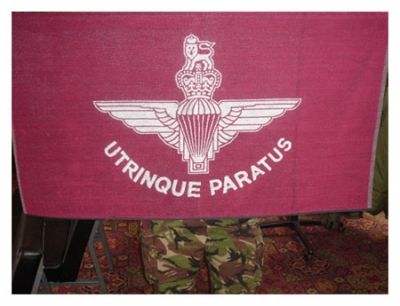
Parachute Regiment/SAS@YouTube
Para's@Play
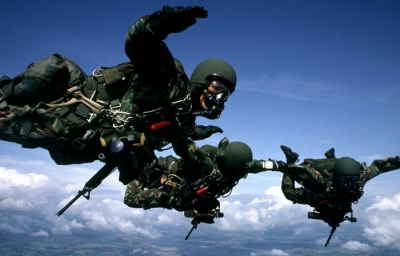
P Company - Parachute Regiment Selection..
Pegasus Company, commonly abbreviated to P Coy, is a training and selection organisation based at the Infantry Training Centre, Catterick, North Yorkshire. P Coy run pre-parachute selection courses for trainees in the Parachute Regiment, all-arms candidates for parachute training (Regular and Territorial). P Coy is also responsible for delivery of the TA Combat Infantrymans Course for candidates for the TA Parachute Battalion, 4 Para.
Pre-parachute selection must be undertaken by all army candidates for parachute training who have not already undergone a strenuous form of training, such as Royal Marines or UK Special Forces.
Training in P Coy culminates in a series of eight tests undertaken over one week.For recruits directly joining the Parachute Regiment, the tests are attempted at week 20 of training, All Arms candidates attempt the tests after 2 and a half weeks of build-up training.
Candidates passing the course can then be loaded onto the Basic Parachute Course at RAF Brize Norton.
10 Miler
A 10-mile (16 km) march conducted as a squad over undulating terrain. Each candidate carries a 35 lb (16 kg) bergen and a rifle. The march is currently to be completed in 1 hour 50 minutes (TA candidates have 2 hours).
Trainasium
A unique assault course set several metres above the ground, to test a candidates' determination and ability to overcome fear. This is the only event which is a straight pass or fail; all the other events are scored. The total score required to pass is known only to the P Coy staff.
Log Race
A team event, where 8 men carry a log (a telegraph pole) weighing 60 kg over 6 miles (9.7 km) of undulating terrain. This is reckoned to be one of the hardest events.
2 Mile March
An individual effort over 2 miles (3.2 km) of undulating terrain, carrying a 35 lb (16 kg) bergan (not including water), rifle, combat jacket, and helmet. Regular candidates have 18 minutes, TA candidates have 19 minutes to complete the run.
Steeplechase
A 1.8-mile (2.9 km) cross-country run, followed by an assault course. Candidates are under a time limit to complete the event.
Milling
In this event, candidates are paired with another candidate of similar size and build, and have 60 seconds to demonstrate 'controlled physical aggression' in a milling contest, similar to boxing, except neither winning or losing, nor skill are pre-requisites of passing; candidates are instead scored on determination, and blocking and dodging results in points being deducted. Candidates now wear head protection, and boxing gloves.
Endurance March
A 20-mile (32 km) march as a squad over a 20-mile (32 km) course. Candidates are carrying a 35 lb (16 kg) bergen and a rifle; the march must be completed in 4 and a half hours. TA candidates do not participate in this event, due to their reduced opportunity to prepare for the course.
Stretcher Race
Candidates are divided into teams of 16 men, and have to carry a 175 lb (79 kg) stretcher over a distance of 5 miles (8.0 km), each individual candidate wearing webbing and a helmet. No more that 4 candidates carry the stretcher at any given time, swapping round at regular intevals so that all candidates carry the stretcher for a certain distance.
#! Trust Me..its as hard as it looks!! ;-) #!
P Company!! Parachute Regiment Selection - Heavy!!..Trust me ;-)
Colonels Commandant -The Parachute Regiment..
- 1942-44 Field Marshal Sir John Dill GCB, CMG, DSO, LLD
- 1944-56 Field Marshal The Viscount Montgomery of Alamein, KG, GCB, DSO, DL
- 1956-61 General Sir Richard Gale, GCB, KBE, DSO, MC
- 1961-65 General Sir Gerald Lathbury, GCB, DSO, MBE
- 1965-67 Lieutenant General Sir Kenneth Darling, KCB, CBE, DSO
- 1967-72 General Sir Mervyn Butler, KCB, CBE, DSO, MC
- 1972-77 General Sir Roland Gibbs, GCB, CBE, DSO, MC, ADC Gen
- 1977-83 General Sir Anthony Farrar-Hockley, GBE, KCB, DSO, MC, ADC Gen
- 1984-90 General Sir Geoffrey Howlett, KBE, MC
- 1990-93 Lieutenant General Sir Michael Gray, KCB, OBE
- 1993-98 Lieutenant General Sir Rupert Smith, KCB, DSO, OBE, QGM
- 1998-04 General Sir Mike Jackson KCB, CBE, DSO, ADC Gen
- 2004 - General Sir John Reith , KCB , CBE
